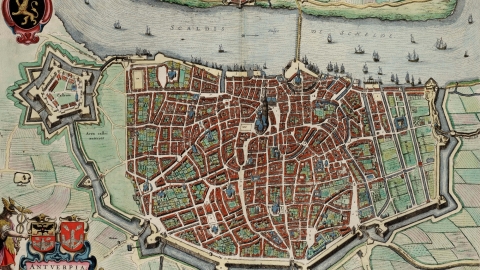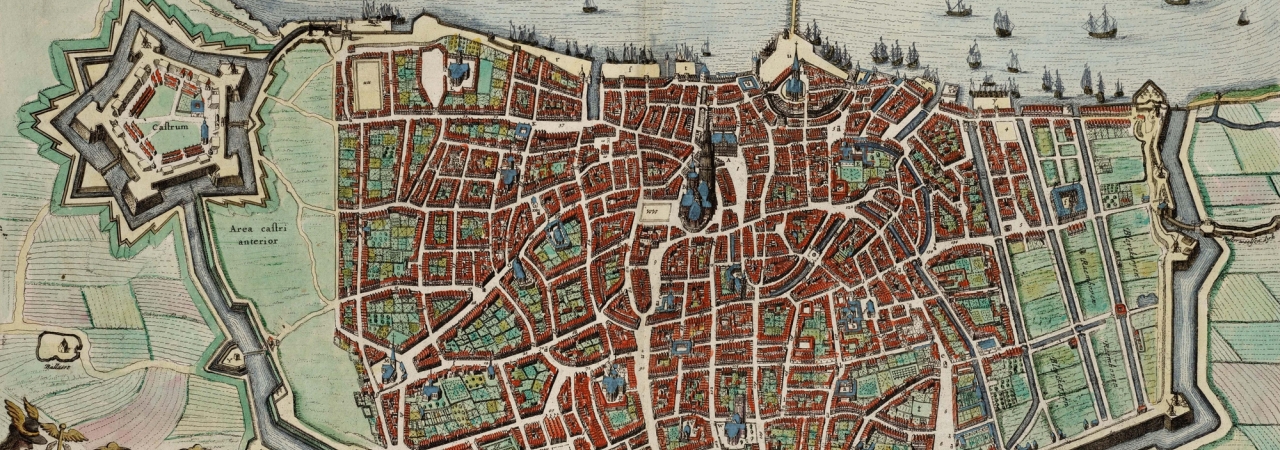Antwerp has a centuries-old tradition as a strategic harbour and fortified town. Between the ninth and the twentieth century, the fortifications at Antwerp were continually extended, demolished and modernised. Particularly in the Spanish era, the ramparts were among the most modern in Europe. Prior to the sieges by Alexander Farnese, under protestant governance the town built forts along the Scheldt, like Liefkenshoek and Lillo. This led to battles for the forts and counter forts on the Scheldt, during which the neighbouring polders were flooded. The famous floating bridge built by Farnese between the Spanish forts Sint-Marie and Sint-Filip caused the town to succumb to Spain and thus determined the course of history for the town and the Netherlands.
Most of the oldest fortifications have disappeared under the expanding town. But the street pattern still reveals the old town walls, embankments and fortifications. The archaeological remains of the Spanish rampart remain well preserved. When Belgium was founded in 1830, strict neutrality was imposed. The land had no real natural borders and was thus difficult to defend. For this reason, the government opted for a ‘national reduit’: a fortified core area to which the army could retreat in the event of an invasion while awaiting help. Thus the fort belts around Antwerp were created and the town became a stronghold second only to Paris in that regard.




